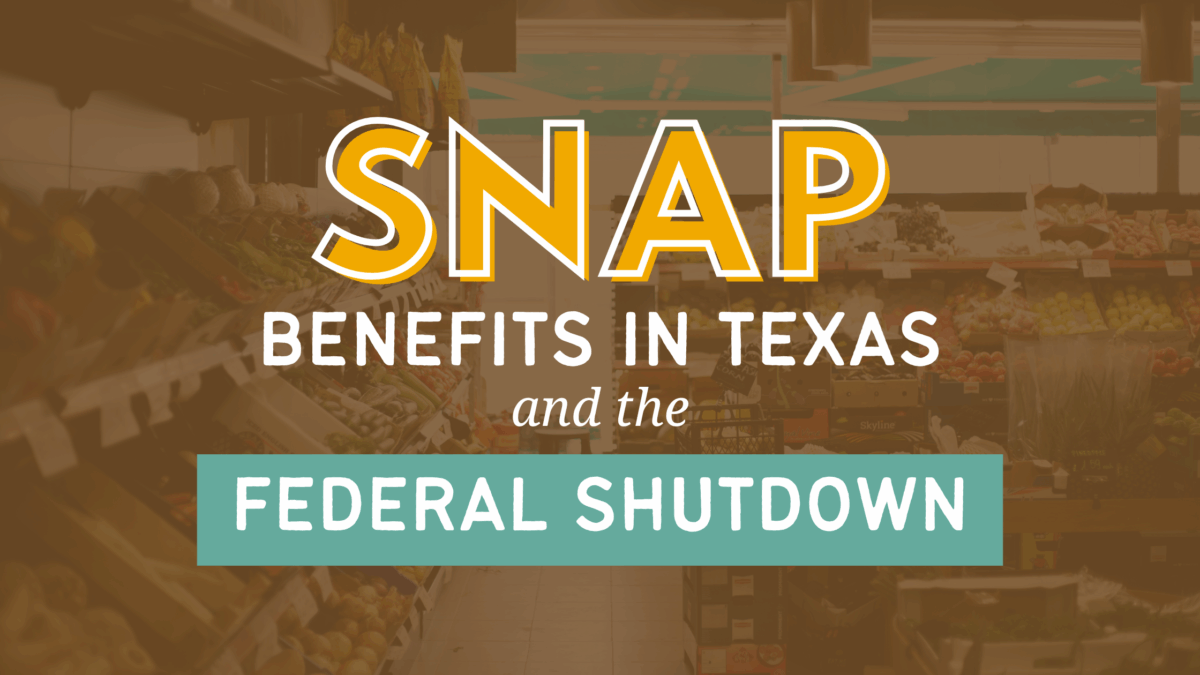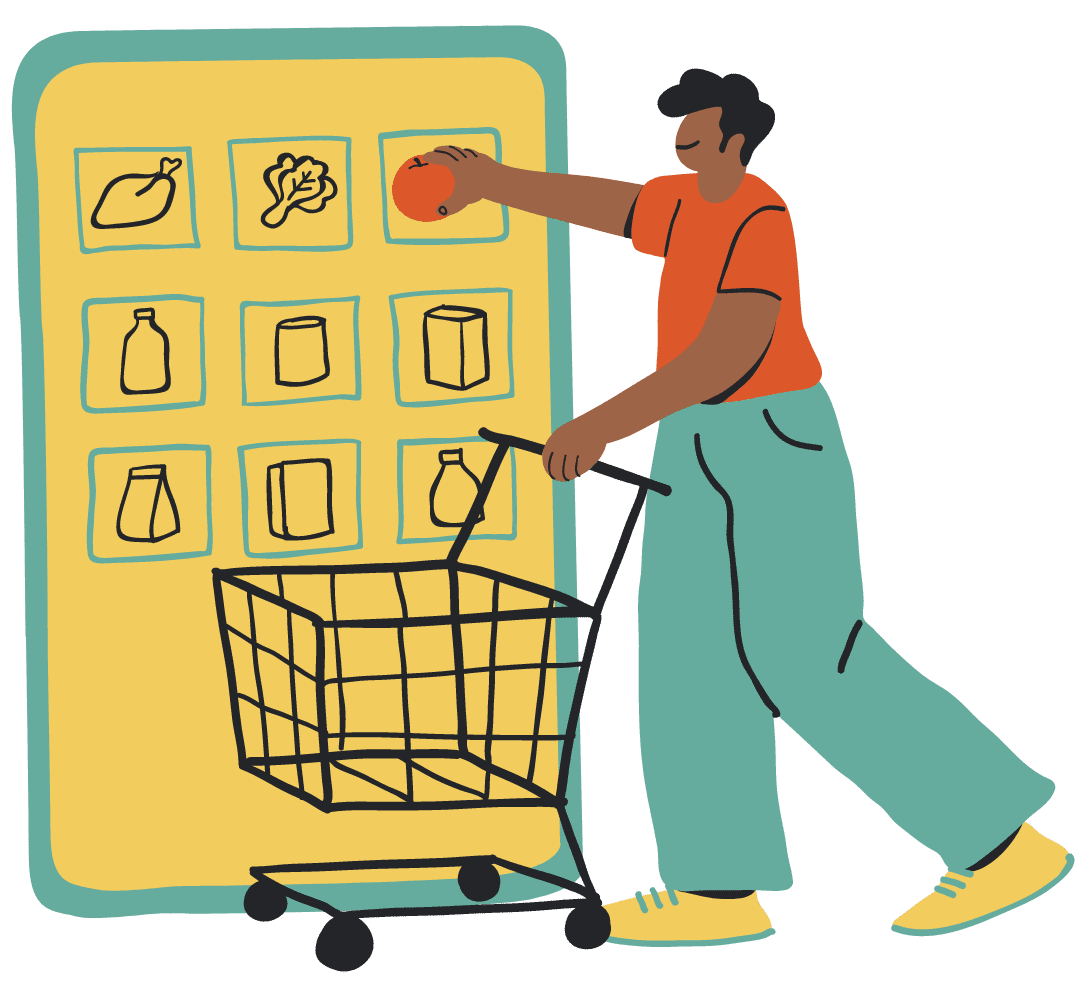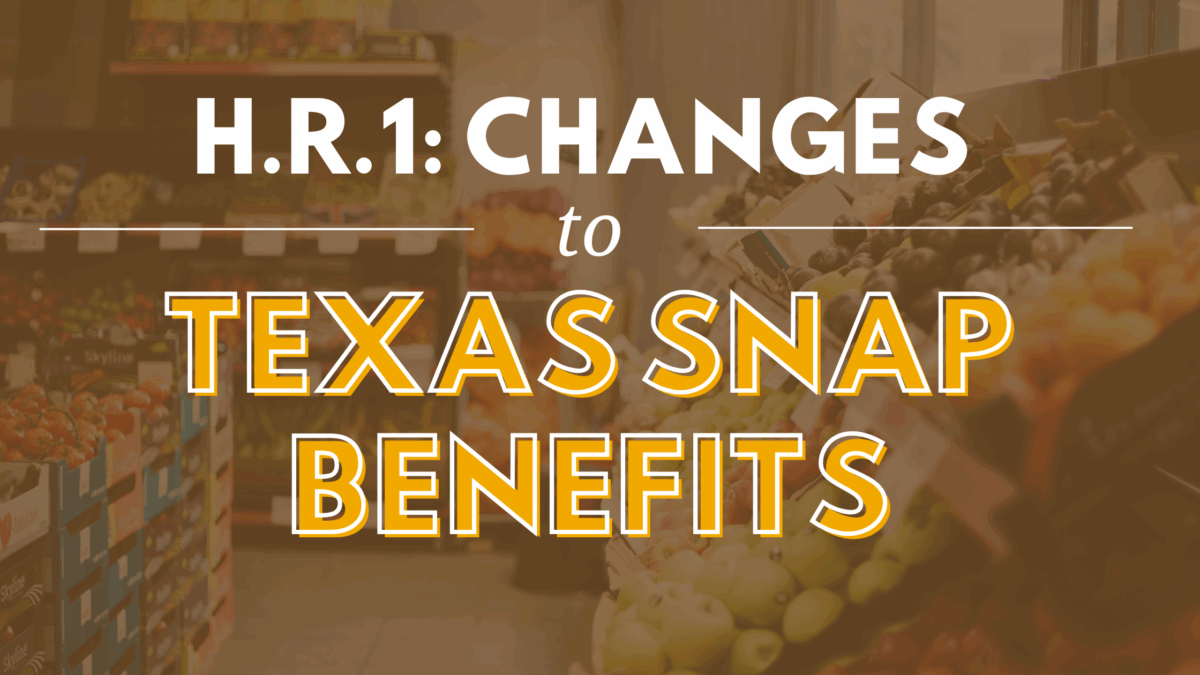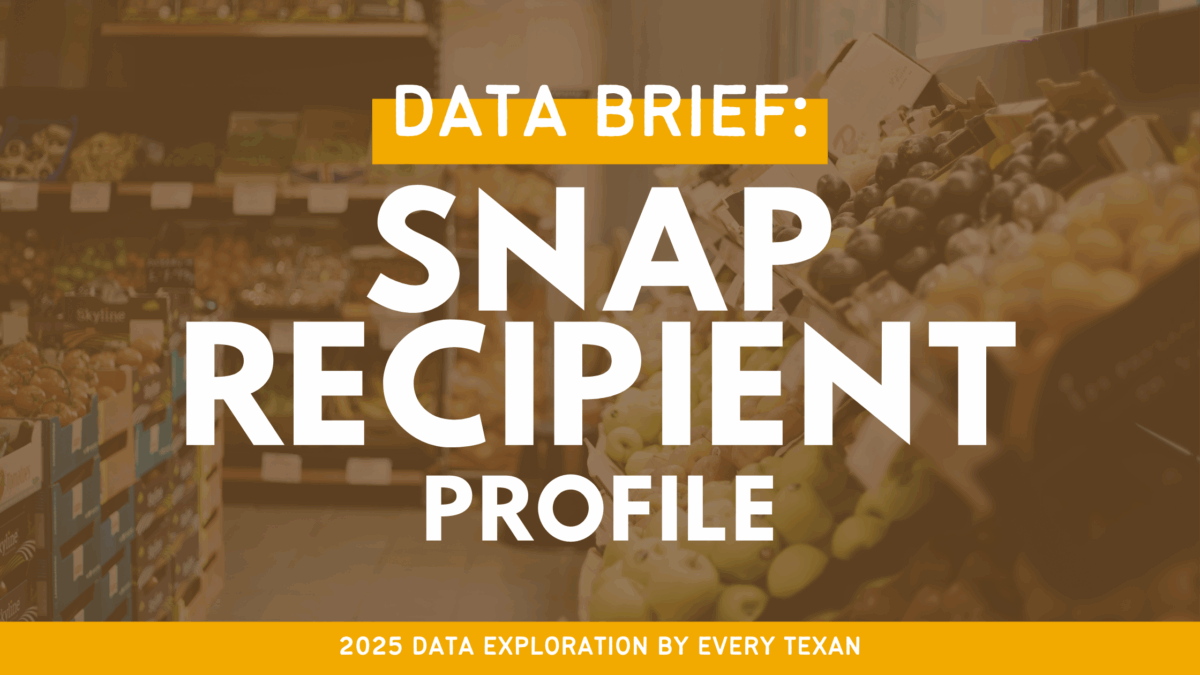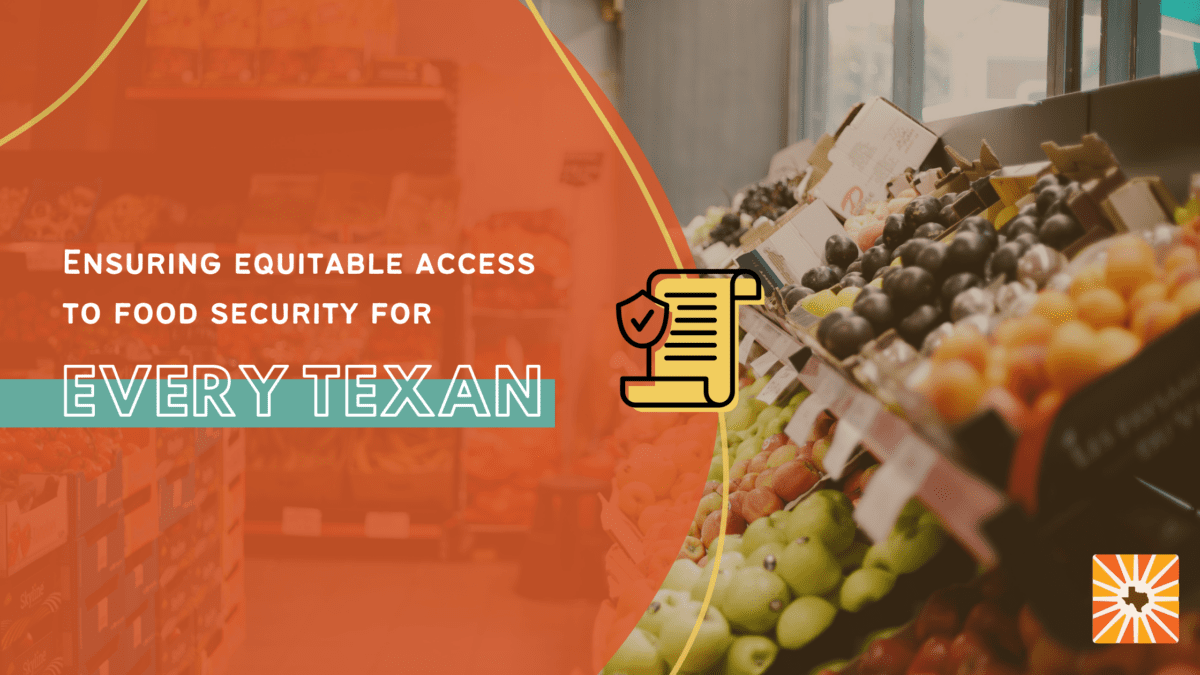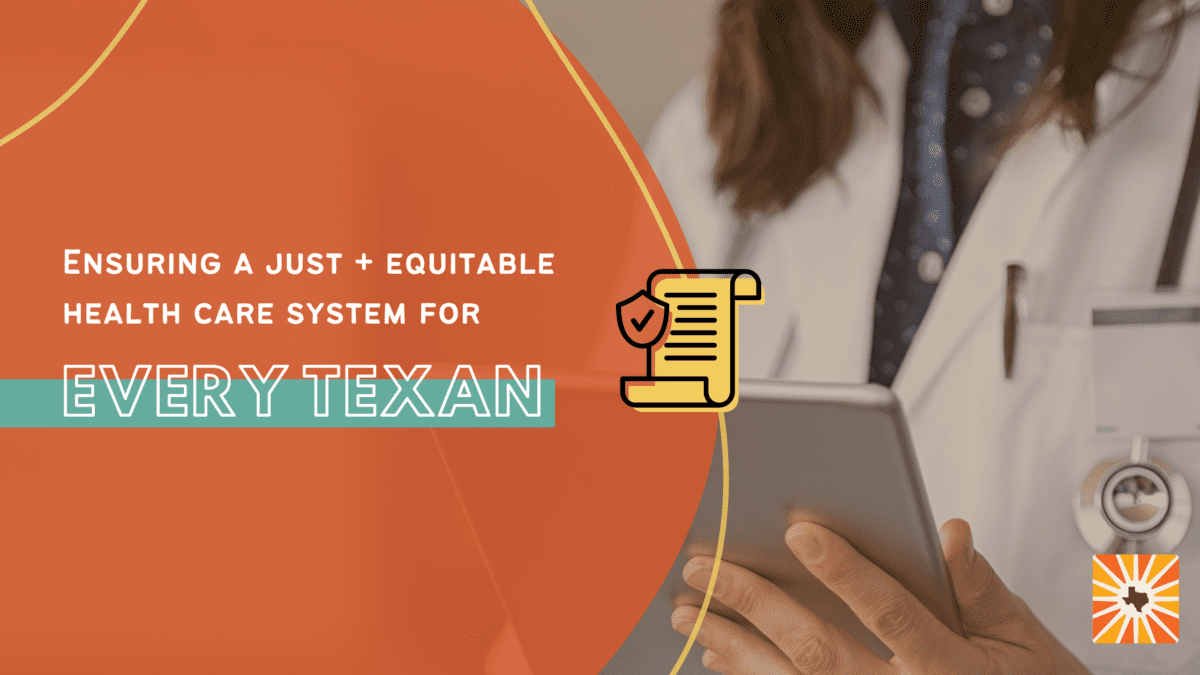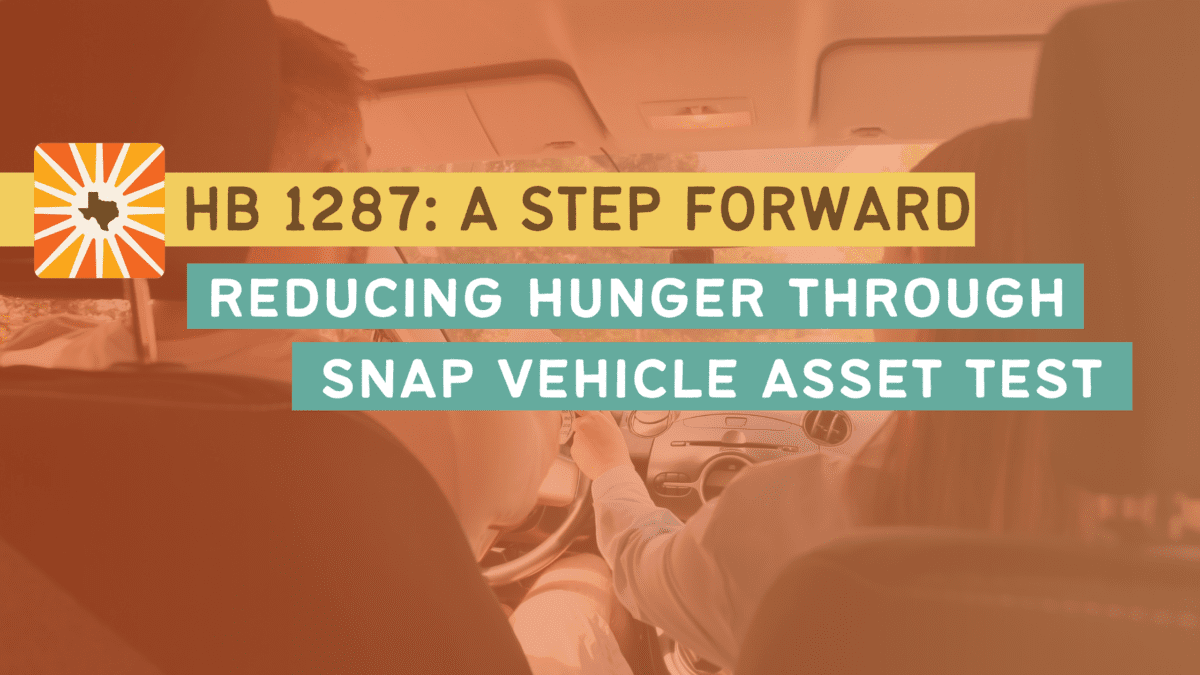About Texas SNAP
SNAP remains a cornerstone program to the food safety net millions of Texans rely on. In 2024, 3.47 million Texans (11.4% of the state population) relied on SNAP to help afford groceries. Even with this essential government program, food insecurity remains widespread in Texas; 17.6% of Texans and more than 22% of Texas children experienced food insecurity last year.
Kids, the elderly, people with disabilities, veterans, and workers who don’t earn enough to feed their families turn to SNAP to help buy food every month. It is the nation’s most effective anti-hunger program. SNAP counters the struggles of hard-working families by providing them with funds to purchase food and pay for basic needs. It’s a buffer against hunger for low-income working families, seniors, and people with disabilities. Explore who relies on SNAP in Texas by county.
While the federal government fully funds SNAP benefits via the U.S. Department of Agriculture, the federal and state governments share the administrative costs. Texas’ Health and Human Services Commission administers SNAP. To fulfill SNAP’s goal of preventing hunger in Texas, HHSC is charged with making accurate eligibility determinations, issuing payments, overseeing participating retailers and preventing fraud. A state’s participation rate is tied to the flexibility it has to modify eligibility rules when administering SNAP. Only 7 out of 10 eligible Texans are enrolled in SNAP, one of the lowest rates of participation in the country, due to unnecessary barriers brought on by the state.
